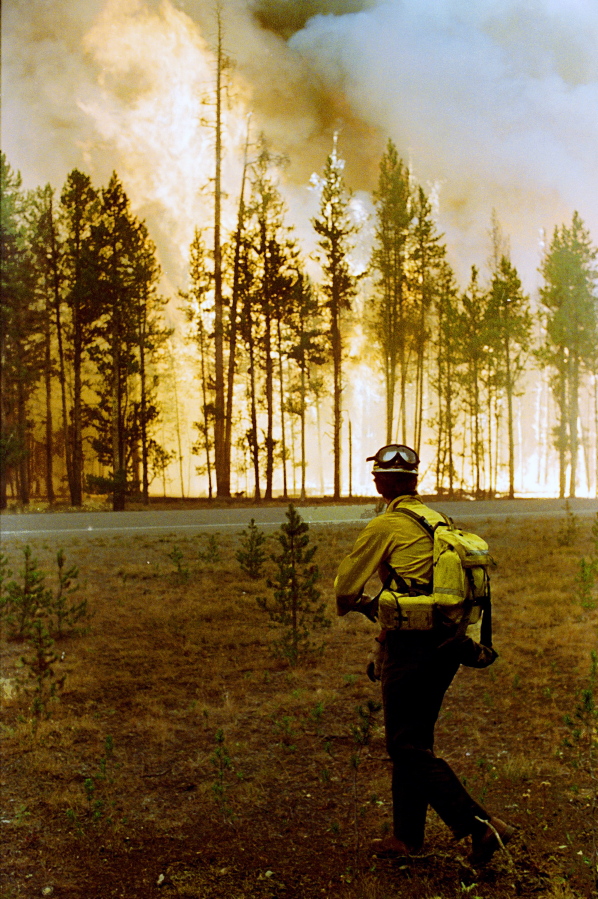CHEYENNE, Wyo. — Nearly three decades ago, huge wildfires burned about a third of Yellowstone National Park. The park has seen wildfires every year since, but the forests of new trees that grew in the scars of those 1988 fires have helped curb their size and intensity — until now.
Several wildfires ignited by lightning strikes this summer in areas of the 3,400-square-mile park that burned 28 years ago have grown substantially. The largest has burned about 60 square miles since it started Aug. 8 on Yellowstone’s west side.
“Largely up until this point, fire has not necessarily carried well through the ’88 fire scars,” Yellowstone fire ecologist Becky Smith said. “I mean, it definitely has before, but it usually takes very specific conditions, like high winds or a very specific fuel bed. But this year, we’re definitely seeing it burn much more readily in the ’88 fire scars.”
The park has called in a special federal team that studies fire behavior to find out why.
“We’re trying to use it as a good learning opportunity to try and really narrow our focus on how and when the ’88 fire scars will burn,” Smith said. The 1988 wildfires burned 36 percent of the park.
It’s the first time Yellowstone has used the special team’s services, she said.
The 13-member team is studying two fires burning in the 1988 fire scar. It has deployed special heat-resistant equipment with sensors, cameras and other instruments to measure things like temperature and wind where the fires are burning.
Once data are gathered from the instruments, the team will provide a summary of its findings to Yellowstone, said Carol Ewell, a team squad leader. She said it’s unclear when the summary will be completed because the fires are still burning and research is still being gathered.
In general, forest and park managers have gained a better understanding of the role fires play in forest ecosystems, Ewell said.
“We’ve had about 100 years of fire suppression-oriented fire management objectives, and now we’re sort of turning the corner — and we have been for almost 30 years now,” she said.
They’re getting better at managing the risks of letting fires perform their natural function in the ecosystem, Ewell said.
For instance, fires renew vegetation that provides better habitat for wildlife.
“So wildlife might have a new crop of grass or bushes come through that are better for their food source; maybe it will create new snag trees for different bird species to live in, or squirrels,” she said.
In Yellowstone, the 1988 fires resulted in new lodgepole pine forests and a more diverse natural habitat, and this year’s fires will provide new benefits as well, Ewell said.
“So to create some biodiversity out there in Yellowstone is a great thing,” she said. “It could be good for the buffalo. It could be good for the elk. There’s a number of different iconic species here.”



